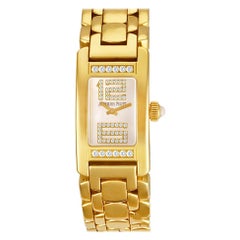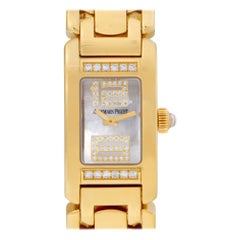Audemars Promesse
Recent Sales
1990s Swiss Contemporary Wrist Watches
21st Century and Contemporary Swiss Contemporary Wrist Watches
1990s Swiss Contemporary Wrist Watches
Early 2000s Swiss Wrist Watches
Diamond, 18k Gold
21st Century and Contemporary Swiss Modern Wrist Watches
1990s Modern Wrist Watches
20th Century Wrist Watches
White Gold
21st Century and Contemporary Wrist Watches
18k Gold, White Gold
21st Century and Contemporary Swiss Wrist Watches
White Diamond, Stainless Steel
21st Century and Contemporary Swiss Wrist Watches
White Diamond, Stainless Steel
21st Century and Contemporary Swiss Wrist Watches
White Diamond, Stainless Steel
21st Century and Contemporary Swiss Wrist Watches
White Diamond, 18k Gold, White Gold
21st Century and Contemporary Swiss Wrist Watches
Diamond, Stainless Steel
Late 20th Century Romanian Wrist Watches
Steel
2010s Swiss Contemporary Wrist Watches
Yellow Gold
2010s Italian Contemporary Wrist Watches
Early 2000s Swiss Modern Wrist Watches
Diamond, Stainless Steel
1990s Swiss Contemporary Wrist Watches
1990s Swiss Contemporary Wrist Watches
1990s Swiss Contemporary Wrist Watches
2010s Unknown Wrist Watches
White Gold
2010s Unknown Wrist Watches
White Gold
21st Century and Contemporary Wrist Watches
Yellow Gold
Early 2000s Swiss Wrist Watches
Diamond, Steel
Audemars Piguet for sale on 1stDibs
The story of celebrated family-owned manufacturer Audemars Piguet and its universally acclaimed, widely coveted luxury watches begins deep in the Jura Mountains in western Switzerland.
The Vallée de Joux has been a haven of watchmaking since the late 18th century, when the residents of farming communities began creating timepieces during the winter months.
Jules Louis Audemars (1851–1918) and Edward Auguste Piguet (1853–1919), both natives of the region, were already deeply entrenched in the world of watchmaking when they joined forces to form a new house of horology near the end of the 19th century, an alliance that would be the start of a multigenerational family company. With complementary specialties within the field, Audemars and Piguet made the perfect pair in 1875: Audemars, the more technically minded of the two, oversaw production, while Piguet specialized in quality control and led the business and marketing parts of the outfit.
Audemars Piguet’s first major milestone came in 1892, when it created the world’s first minute-repeating movement for a wristwatch. (It was sold to Omega, whose origins date to 1848.) That was soon followed in 1899 with the Universelle pocket watch, a masterpiece of horology that boasted a perpetual calendar, minute repeater, alarm and chronograph with jumping seconds. It is still said to be the most complicated timepiece that Audemars Piguet has ever designed.
Between 1918 and 1919, both founders of Audemars Piguet had died and were replaced by their respective sons, incidentally both named Paul. Under the leadership of Paul Louis Audemars and Paul Edward Piguet, the watchmaker continued to innovate. It retained an ever-evolving technical focus and found new praise for its efforts, producing the world’s thinnest pocket-watch caliber in 1925, the first skeletonized pocket watch in 1934 and the world’s thinnest wristwatch in 1946.
When the quartz crisis of the 1970s left many watchmakers in the lurch, Audemars and Piguet found a creative solution, tapping the Geneva-born Gérald Genta to conceive the first-ever luxury watch in stainless steel. Launched at what would become the Baselworld watch and jewelry fair in 1972, the Royal Oak, with its octagonal face and integrated bracelet, would come to define the look of Audemars Piguet and revolutionize the luxury wristwatch industry, setting a standard that continues to this day.
Find a collection of vintage Audemars Piguet wristwatches and pocket watches on 1stDibs.
Finding the Right Wrist-watches for You
Antique, vintage and luxury wristwatches have captured the hearts and minds of all manner of watch collectors as well as the watchmakers themselves — it's time you found your own.
Certain vintage watches for men and iconic watch designs for women are sought after not only because of their graceful proportions or innovative materials but also because of the illustrious histories of the houses that created them, histories that they stylishly embody.
Bulgari’s legendary Serpenti watch was on everyone’s list after the collection’s bold bracelet, which technically debuted after the timepiece, graced the wrist of actress Elizabeth Taylor. If anything, elaborately crafted timepieces — the unmistakably boxy silhouette of Cartier Tank watches, the elegant and minimal Calatrava designed by legendary Swiss house Patek Philippe — are even more effective than the shape we associate with traditional wristwatches.
Form watches — the all-encompassing moniker bestowed upon non-round watches — are making headlines and completing contemporary fashionable ensembles the world over. At the same time, both casual fans and careful collectors are drawn to the unbeatable charm of vintage styles, such as the icons designed by Omega that even James Bond can’t resist.
In the early days of watchmaking, watches were fragile enough that they necessitated protection from the elements. Now, wristwatches made of gold and steel can withstand the harshest climates — even 100 meters underwater, in the case of Rolex’s Submariner. Designer Gérald Genta, whose range of clients included Rolex, created for Audemars Piguet the first luxury sports timepiece to be made from stainless steel. First introduced in 1972, the Royal Oak was a perfect choice for blending the form and function that are now synonymous with sports watches.
Are you shopping for a wristwatch? It’s good to keep your needs as well as your specific personal style in mind: A smaller, subtle timepiece is a good fit for small wrists. When will you be wearing your new accessory? There’s a versatile model out there for everyday wear, while a rugged, feature-heavy watch is a safe bet if you’re prone to embarking on all-weather activities in the great outdoors.
Find antique, vintage and luxury wristwatches for sale on 1stDibs.
- Is AP older than Rolex?1 Answer1stDibs ExpertDecember 17, 2024Yes, AP is older than Rolex. Jules Louis Audemars and Edward Auguste Piguet founded Audemars Piguet in 1875. Thirty years later, in 1905, Hans Wilsdorf and his brother-in-law Alfred Davis established Rolex. On 1stDibs, find a diverse assortment of Rolex and Audemars Piguet watches.
- 1stDibs ExpertDecember 17, 2024Whether or not AP is more expensive than Patek Philippe varies, as both watchmakers offer a wide range of timepieces. In terms of price points for entry-level timepieces, Audemars Piguet timepieces are often slightly less costly than those produced by Patek Philippe. The most expensive limited edition Patek Philippe watches are also often priced higher than those crafted by AP. On 1stDibs, shop a collection of Patek Philippe and Audemars Piguet watches.

